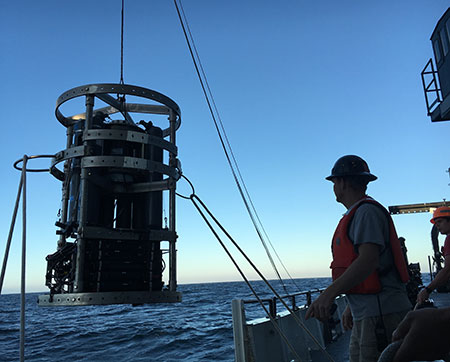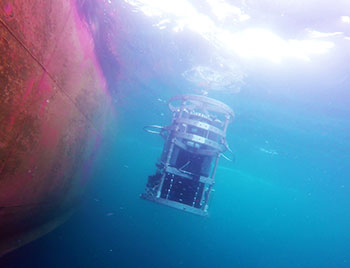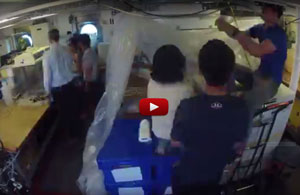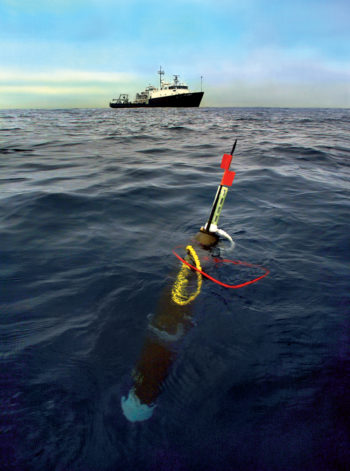 It’s not a great thing when the CTD (Conductivity, Temperature and Depth) Rosette bumps into the hull of the ship, as it did on one of the launches today.
It’s not a great thing when the CTD (Conductivity, Temperature and Depth) Rosette bumps into the hull of the ship, as it did on one of the launches today.
The CTD weighs about half a ton when the water sample canisters are empty, and about 1,300 pounds when the bottles are full. A wayward swing could not only damage the sensitive – and expensive – equipment, it could cause serious injury and death.
But the CTD has an outer cage meant to protect the equipment, and it did its job very well. No harm, no foul. Read More »
 As I started writing this, an array of sensors was taking measurements from the surface to near the bottom of the Santa Cruz Basin. They are being tested with a CTD (Conductivity, Temperature and Depth) Rosette device, which will help researchers characterize the distribution of biomass at different water depths.
As I started writing this, an array of sensors was taking measurements from the surface to near the bottom of the Santa Cruz Basin. They are being tested with a CTD (Conductivity, Temperature and Depth) Rosette device, which will help researchers characterize the distribution of biomass at different water depths.  The time was 5:55 a.m., and I was wondering whether I should wake up Berkeley Lab engineer Tim Loew, who had nodded off at the table in the middle of assembling a polarizer for the robotic float. I wanted to let him sleep long enough for me to reach for my camera, but he woke up before I got the shot. Maybe next time.
The time was 5:55 a.m., and I was wondering whether I should wake up Berkeley Lab engineer Tim Loew, who had nodded off at the table in the middle of assembling a polarizer for the robotic float. I wanted to let him sleep long enough for me to reach for my camera, but he woke up before I got the shot. Maybe next time.  The countdown has begun. In less than 24 hours, I will be boarding a ship with a team of scientists and engineers from Lawrence Berkeley National Laboratory (Berkeley Lab) and the University of California, Berkeley, as they prepare to set sail on a 10-day voyage to study the ocean’s biological carbon pump.
The countdown has begun. In less than 24 hours, I will be boarding a ship with a team of scientists and engineers from Lawrence Berkeley National Laboratory (Berkeley Lab) and the University of California, Berkeley, as they prepare to set sail on a 10-day voyage to study the ocean’s biological carbon pump. 